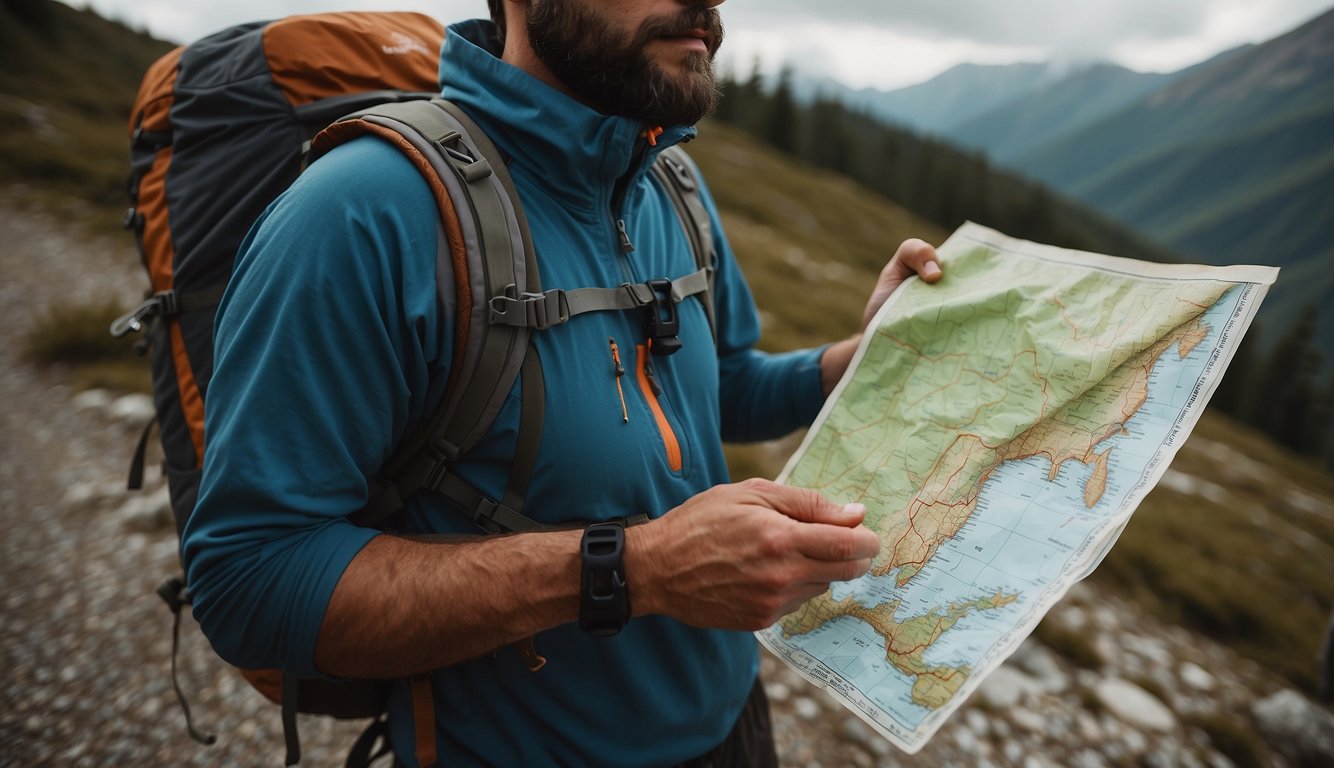Starting Out: Tips for Trail Running Beginners – Your Essential Guide
Trail running offers a refreshing change from the monotonous pavements and an opportunity to connect with nature. As a UESCA certified running coach, I’ve guided many beginners through their first strides off the beaten path. Starting is simpler than one might think. You need to select softer, non-pavement surfaces such as dirt paths and grass that provide natural cushioning for your joints. While the varied terrain can be challenging, it helps build strength and improve balance.
The key to success in trail running is preparation. When exploring trails, it’s crucial to start with the right gear—invest in a solid pair of trail running shoes that offer grip, stability, and protection. As a beginner, focus on maintaining a short stride to manage your balance and agility over uneven surfaces. Keep your eyes up and scan the trail ahead to anticipate obstacles, but don’t fixate on your feet.
Enjoyment and safety should be your priorities when starting out. Whether it’s a local forest trail or a mountain path, your initial runs should be about familiarization with the new terrain. Take your time, absorb the scenery, and don’t worry about speed. Remember, trail running is as much about the journey as it is about fitness. As you gain confidence, elevation changes and technical trails will become exciting challenges rather than daunting obstacles.
Choosing the Right Gear
When starting trail running, selecting the right gear is crucial for both comfort and safety. Here’s what you need to know about footwear, clothing, and navigational tools.

Footwear Essentials
Choosing the right trail running shoes is paramount. This isn’t a place to skimp; look for shoes with good grip, protection, and specifically designed for variable, uneven terrain. Trail shoes are designed with thicker soles and offer stability for various surfaces, such as mud, rocks, and roots. Consider shoes with a water-resistant feature for wet conditions, and ensure they fit well to prevent blisters.
Trail Running Shoe Features:
- Grip: Look for deep lugs for traction.
- Protection: A reinforced toe box guards against rocks.
- Fit: Snug but comfortable to avoid blisters.
Hydration:
- Hydration Packs/Vests: Essential for long trails.
- Water Bottles: Have at least one bottle accessible.
Clothing and Layers
Clothing should be comfortable, breathable, and suitable for the weather. Opt for synthetic fibers that wick moisture away from the body. A technical running cap can protect your head from the sun, while a headband or neck gaiter might be necessary for colder conditions.
- Essential Clothing Checklist:
- Hat: Protects against sun exposure.
- Windbreaker: Shields from wind and rain.
- Base Layers: Light and moisture-wicking.
- Gaiters: Keep debris out of your shoes.
Navigational Tools and Safety Items
Do not step onto the trail without a way to navigate. A GPS watch can track your route and distance. Also, pack a physical map and compass as failsafes. Safety items like a headlamp or torch, sunscreen, lip balm, and a basic first aid kit should always be with you.
- Navigation and Safety Gear:
- GPS Watch: Tracks distance and route.
- Compass: For traditional navigation.
- Headlamp: Essential for dark conditions.
- First Aid Kit: Basic medical supplies.
Remember, the right gear can make or break your trail running experience, so choose wisely.
Getting to Know Your Terrain

Before hitting the trail, it’s crucial to familiarize yourself with the trail surface and how different weather and environmental conditions can affect your run. This knowledge will enhance your stability and safety as you navigate through nature.
Understanding Trail Surfaces
Trail running is a unique experience because of the variety of trail surfaces you might encounter. It’s important to recognize that different surfaces can profoundly affect your stability and running technique. Here’s what you should consider:
- Softer Surfaces: These include dirt paths and grass, which are kinder to your joints. Stability can be tricky due to potential unevenness, so staying alert is key.
- Rugged Terrain: Trails with rocks, roots, and other natural obstacles require extra attention. Keep your feet lower to the ground for better balance, and don’t overstride.
- Trail-Running Shoes: I always advise visiting a local running store to find shoes specific for trail running; look for shoes with good grip and durability to tackle varying terrains.
Remember, different surfaces require different running mechanics, so adapt your stride and pace to the ground beneath your feet.
Weather and Environmental Conditions
Trail running can be significantly influenced by weather and environmental conditions. Here’s a brief overview of what to look for:
- Weather Changes: Always check the weather forecast before a trail run. Wet weather can make the trails slippery and more challenging, and you may need to adjust your pace accordingly.
- Elevation Gain: Be mindful of the elevation profile of the trail. Increased elevation gain requires more energy and can affect your breathing.
- Wildlife and Nature: Keep an eye out for wildlife and stay aware of your surroundings. Remember, you’re a visitor in their home.
Being prepared for environmental changes will help you better enjoy your run while staying safe in nature.
Training and Technique
In trail running, adopting the right form and building physical strength are crucial for efficiency and injury prevention. A solid technique coupled with enhanced stamina allows for a smoother transition into trail running, especially for those with prior road running experience.
Trail Running Form
To safely navigate the uneven terrain and natural obstacles trails often present, I teach a specific trail running form. Keep your stride length shorter to maintain balance and avoid overuse injuries.
Stay agile with quick foot placement, adjusting your gait for obstacles like roots and rocks. Running form matters more on the trails, as it affects traction and stability. Look ahead, not down, to anticipate changes and maintain a steady pace.
Building Strength and Stamina
Strength and stamina are the backbone of trail running. I recommend a strength training routine including plyometric exercises to improve power and endurance.
Gradually increase inclines and distances in your training to build muscle strength and adapt to the impact of trail running. Avoid stress on your body by allowing time for recovery to prevent the risk of overuse injuries.
| Strength exercise | Benefit for Trail Running |
|---|---|
| Squats | Build leg and core strength, improving stability on uneven terrain |
| Lunges | Enhance balance and control during changes in pace and direction |
| Box Jumps | Increase power for navigating obstacles and quick changes in elevation |
Mastering Pace and Cadence
Adapting to a consistent pace and cadence can be challenging on trails, but it’s necessary to conserve energy and run efficiently. As a running coach, I suggest working with various pace strategies to find what’s best suited to the trail’s demands. Regularly train on hills and technical trails to become comfortable with changes of pace and learn how to use your body’s natural rhythm, or cadence, to move effectively over prolonged distances.
Safety and Preparedness

In trail running, preparation is key to safety. Therefore, it’s essential to equip yourself appropriately and stay vigilant to the environment around you.
Essential Safety Gear
To ensure safety on the trails, I always recommend carrying the following items:
- GPS device or app: Crucial for navigation and tracking your location.
- Compass: A reliable fallback for when technology fails.
- Hydration pack: Keeps you hydrated without disrupting your stride.
- Cell phone: For emergency communication and additional navigation.
- First aid kit: Should include bandages, antiseptic, and blister treatment.
Being Aware of Your Surroundings
Maintaining constant awareness of the trail is a cornerstone of safety:
- Eyes on the trail: Always observe 10 to 15 feet ahead to spot obstacles.
- Listen for cues: Be mindful of potential wildlife or other runners.
- Learn the trail signs: Familiarize yourself with local trail markings to stay on the right path.
By following these tips, you can minimize risks and enjoy a secure trail running experience.
Planning Your Run

When I start planning a trail run, my first step is to choose an appropriate route that matches my fitness level and running goals. For beginners, it’s crucial to select trails that aren’t overly technical and are manageable given your current condition.
Selecting a Trail:
- Technical Trails: If you’re just starting out, aim to avoid highly technical trails with a lot of elevation change.
- Fitness Level Compatibility: Choose routes that are suitable to your fitness level to prevent injury and ensure enjoyment.
- Trail Races: If your goal is to eventually participate in trail races, gradually increase the difficulty of your chosen routes.
Using Technology:
- GPS and Smartphone: Equip yourself with a GPS device or a smartphone with a reliable trail map app. These tools are invaluable for navigation and keeping you on track.
- Trail Maps: Always carry a physical trail map as a backup. It can be a lifesaver if technology fails.
Route Planning Table:
| Run Length | Trail Type | Checklist Item |
|---|---|---|
| Short | Local, well-marked | Basic trail map |
| Medium | Semi-technical | Hydration pack |
| Long | Technical, remote | Safety equipment |
When mapping your route, plan for the expected and the unexpected. Know where you can access water and aid stations, and always have an emergency plan. Trail running is unpredictable by nature, but thorough planning makes for safer and more enjoyable experiences.






